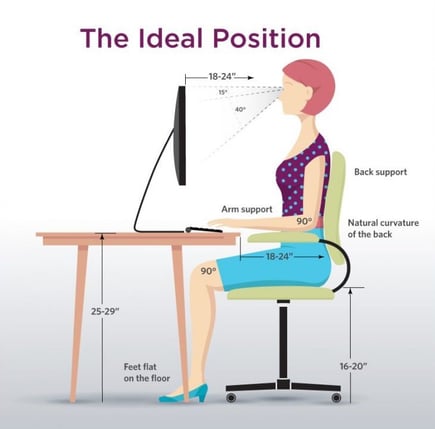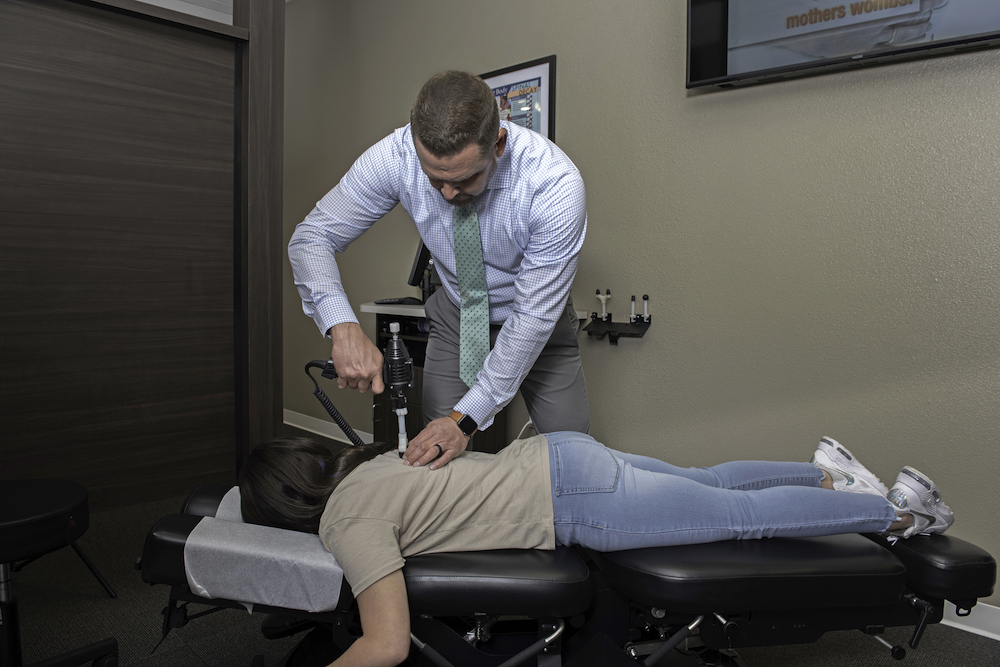How to Prevent Back Pain from Sitting at Work
4 min read

If you spend most of your day sitting at a desk, you may have experienced aches and pains in your back and/or neck. It’s very common, especially when you’re in the same position for long periods of time day after day.
The truth is, our bodies don’t respond well to staying in the same position for long periods of time. Being sedentary, or moving very little, can cause a number of back problems including:
- Strained / sore neck, shoulders, and lower back
- Poor posture
- Spinal inflexibility
- Spinal disc damage
Because it’s not practical to simply leave your job because you sit a lot, there are things you can do to help minimize the impact that long-term sitting can have on your back.
The Importance of Good Posture and Regular Movement
Incorrect posture while working on a computer is a primary reason employees suffer from back pain. Fortunately, there are small steps you can take that can help prevent back pain from sitting at work:
1. Set your computer screen and desktop to a proper height.
When working on a computer, the top of the screen should be at eye level in order to avoid straining your neck and back. Simply raising your viewing angle can greatly help when it comes to avoiding slouching as you work. A monitor stand (or even a stack of books under your monitor or laptop) can help you achieve the proper monitor height.
2. Consider a sit-stand desk.
One of the easiest ways to incorporate more standing and movement into your work day is to use a sit-stand desk. A sit-stand desk is an adjustable desk that allows you to alternate between sitting and standing at your desk while you work. Having this capability is a great way to lessen pressure on your spine and prevent discomfort and pain in your back.
3. Choose a chair that provides good support.
Long days sitting at your workstation can put excess pressure on your spine. This is why it is important to use an ergonomic chair that supports the natural curve of your spine. Using a lumbar support pillow can also be helpful.
It’s also important to adjust the height of your chair if needed. Maintaining the right posture can be challenging if your seat isn’t adjusted properly. As a general rule, adjust the height of your chair to where your thighs are at a right angle to your body.
How you sit in your chair matters as well. Place your feet firmly on the ground for the best support. Try to avoid tucking one leg under you or sitting “lopsided” if you can avoid it. If you cannot reach the floor comfortably, try using a footrest.
4. Take short breaks.
To avoid back pain, it’s important to take as many short breaks from sitting as possible throughout the day while still being productive in your job. This gives your back a break because your muscles don’t need to hold the same position. Try your best to stand, stretch, and walk for at least a minute or two every half hour. Take phone calls standing up. Walk up or down stairs to your next meeting. Or just be sure you take enough restroom and water breaks that you’re getting out of your desk chair frequently enough to avoid back pain.
5. Improve your posture while sitting.
It can be hard to maintain good posture while at work. But being mindful of how you sit can lessen the amount of strain you put on your back. When sitting, sit with your back straight and your shoulders back (your buttocks should touch the back of your chair). Distribute your body weight evenly on hips, bend your knees at a right angle, and keep your feet flat on the floor. Rest your elbows and arms on your chair or desk, keeping your shoulders relaxed. Adjust your desktop, monitor, and chair as needed. Using a lumbar pillow can be helpful if your chair is not a perfect fit.
Another option to help improve posture is sitting on an exercise ball. Sitting on a ball, rather than a desk chair, makes it more difficult to slouch. It also engages various muscle groups that remain at rest when slouching on a chair and makes them stronger.
Relieving Back Pain Caused by Sitting
If you find that you’re experiencing some soreness or stiffness after sitting at work, here are some suggestions to help you relieve the soreness:
- Stretch. Prolonged sitting can cause significant strain on our neck, shoulders, and back. To minimize the impact, take mini-breaks throughout the day to stretch. Roll your neck, shrug your shoulders, reach for the ceiling, bend forward to touch your toes, etc.--it doesn’t have to be anything major, just enough to relieve pressure and elongate your muscles.
- Exercise. Activities such as yoga and pilates can be an effective way of preventing and treating back pain caused by sitting. When done appropriately, these exercises can both relax your muscles and strengthen your back.
- Foam rolling. Foam rolling is a technique that works like a deep tissue massage to help relieve tight muscles, which can be the result of sitting too long. A foam roller allows you to realign muscles and reduce discomfort by putting gentle pressure to the tender spots in your back that bother you.
If you find that stretching and changing positions isn’t helping after a week or so, you may want to schedule an appointment. A massage therapist and/or a chiropractor can work deeper into the muscles and help you realign your spine for back pain relief.
If you have back pain that doesn’t seem to go away, request an appoinment at Village Chiropractic located in The Woodlands to find out what we can do for you.





